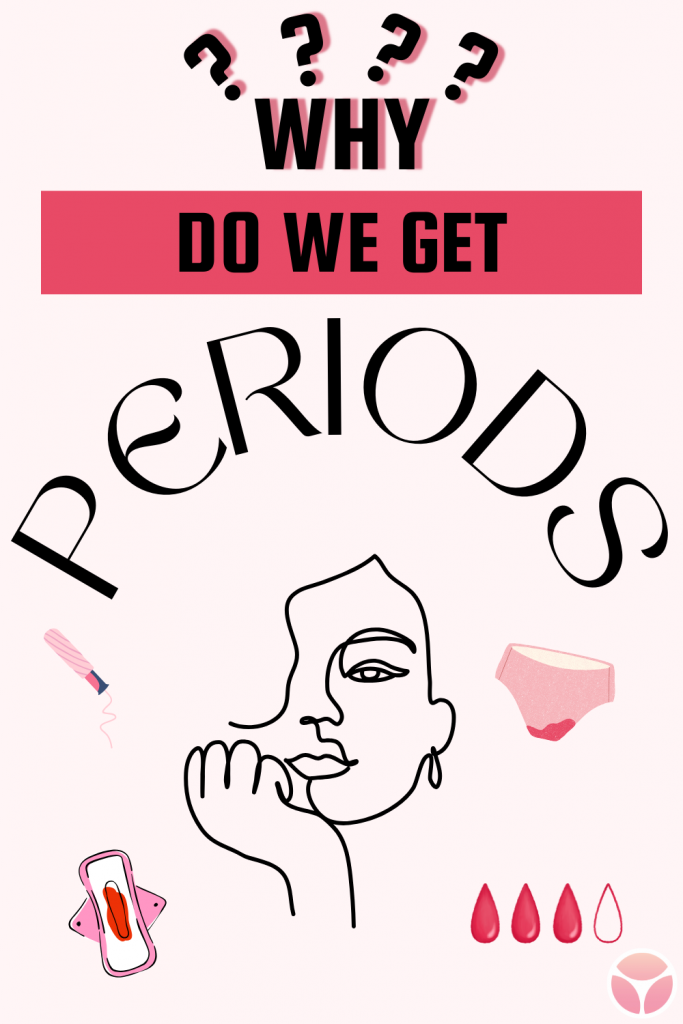Understanding the Menstrual Cycle: Unravelling the Why

Have you ever wondered… why do we get periods? Or as I like to say ‘blessed with a monthly gift!’
In this article I uncover the reasons behind this monthly phenomenon and the biological wonders that govern our bodies.🩸
1. Crucial Terminology: Decoding the Basics
Before we delve into the depths of the menstrual cycle, let’s familiarise ourselves with some fundamental terms. From the egg, to the process of implantation, these words form the vocabulary of our discussion. Understanding these terms lays the groundwork for comprehending the menstrual cycle’s complexities.
- The Egg: Life’s Blueprint: In the menstrual cycle, the term “egg” refers to a cell your body releases monthly during ovulation, scientifically known as an oocyte. This cell carries your genetic material, necessary for creating a baby. To initiate the process of life, the egg must merge with a sperm, which contains the complementary genetic code. This union forms the foundation for human reproduction.
- Fertilised Egg: The Start of Life: A fertilised egg forms when the sperm breaks through the egg’s protective wall setting the stage for the merging of genetic material. This biological event marks the start of the journey called pregnancy.
- Endometrium: Uterine Lining: The endometrium is simply the lining of your uterus, commonly referred to as ‘uterine lining.’ It is a vital component of the female reproductive system. It thickens each month under hormonal influence, preparing a welcoming environment for a potential pregnancy. The uterine lining serves as a nurturing bed for the fertilised egg, providing essential support (blood and nutrients) for its early development.
- Implantation: Life’s First Connection: Implantation occurs when the fertilised egg attaches itself to the endometrial lining. This attachment initiates the pregnancy process, allowing the embryo to receive necessary nutrients and support from the mother’s body. 🌱
2. The Hormonal Orchestra: Regulating the Menstrual Symphony
Our monthly cycles are masterfully regulated by hormones, particularly oestrogen and progesterone, (more about your reproductive hormones here). These dynamic compounds prepare the uterine lining, or the endometrium, for a potential pregnancy. The intricate process involves thickening the lining, enriching it with blood and nutrients, all in anticipation of nurturing a fertilised egg. Whether or not conception is on your mind, your body diligently readies itself, each month, crafting the perfect environment for a growing baby. 💫
The uterine lining has to be ready before implantation can happen.
Oestrogen’s role: Oestrogen tells the lining of the uterus to grow and thicken and in this process supplied blood to this lining.
Progesterone’s role: Progesterone tells the lining of the uterus to change into cells needed to nourish and support growth of the fertilised egg.
So, before the egg is even fertilised or attached to the uterine lining, the cells are changing to prepare for the fertilised egg. 🧬
3. The Uniqueness of Human Physiology: A Special Approach to Pregnancy Preparation
Humans are a tad different. In our fascinating biological design, we prepare for a potential pregnancy every month, a process that differentiates us from many other animals. While most creatures initiate this preparation post-implantation, humans construct a nurturing haven (the uterine lining, that is 😉) beforehand, just in case. The thicker uterine lining, essential for human foetal development, cannot be entirely reabsorbed, leading to its shedding during menstruation. This shedding, your period, occurs when the egg remains unfertilised, therefore, no implantation occurs, so hormone levels drop and the prepared uterine lining is no longer needed.
And… the story doesn’t end there.
As soon as this layer is shed, your body starts this process all over again, making a new uterine lining to nourish the next possible fertilised egg.
I know what you’re thinking. WHY???
Why would anyone want to be in a perpetual state of a possible pregnancy? 😩
A possible explanation is about energy use. 🔄
4. The Energy-Efficient Approach: Understanding the Body’s Wisdom
Interestingly, the human body, in its wisdom, opts for an energy-efficient approach. Instead of maintaining a thick uterine lining constantly, which would require significant energy, the body renews it each and every month. Apparently, it uses less energy to grow a new lining every month. This continuous cycle of building and shedding ensures readiness for potential pregnancy without excessive energy drain. So, the answer to Why Do We Get Periods, is to stay ready for a potential pregnancy.
Think about this 🤔
Think about just how truly amazing your body is in its quest for continuing our species.
PERIOD 🩸 = shedding of uterine lining that was going to nourish a growing baby, is now gone.
2 weeks later = your uterine lining is completely restored and ready again to nourish a possible fertilised egg.
2 weeks later = uterine lining sheds.
2 weeks later = uterine lining restored.
2 weeks later = uterine lining sheds.
You get the picture 📷
Conclusion: The Marvellous Journey of Reproduction
So, there you have it. The answer to WHY DO WE GET PERIODS?
Your body’s monthly preparation, proof of its innate desire for reproduction, leads to the phenomenon we call a period. Each month, your body constructs a nurturing home for a potential fertilised egg, demonstrating its remarkable capabilities. Since the egg wasn’t fertilised, the lining of your uterus sheds, resulting in your period. That’s it. Period.
Therefore, in answering the question, Why Do We Get Periods? And understanding the reasons behind our periods not only clarifies a biological process but also highlights the awe-inspiring intricacies of the human body. Let’s celebrate this marvel, appreciating our bodies for the wonders they are. Period. Gotcha again!
If you have any questions or comments, I’d love to hear from you. In the meantime, happy home building!
Amanda xx
